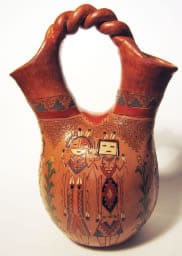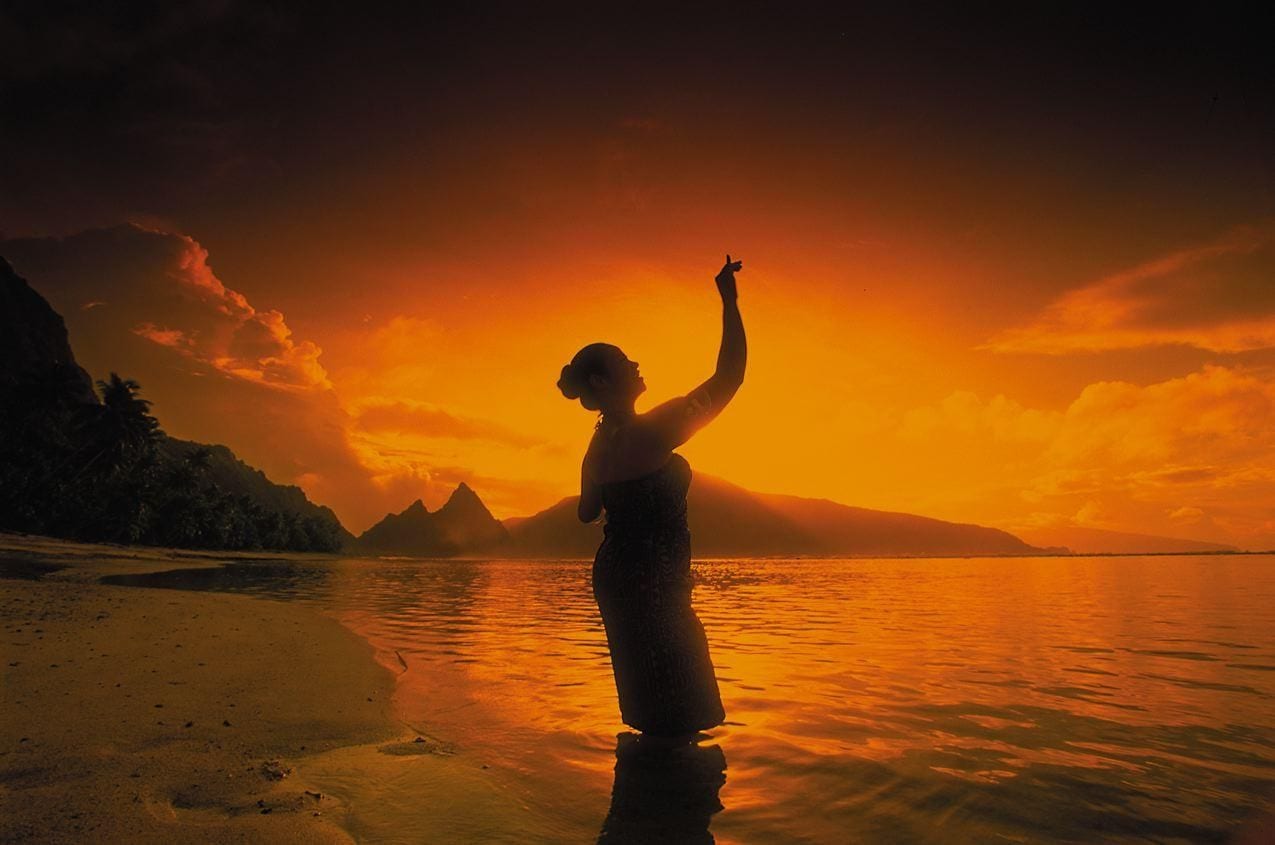3 Comments
Posted on February 24, 2019
The Lost Culture & Practices of the Native Americans: The Navajo
Before any imperialistic colonization of the North and South American regions took place, there was a time where different tribes of people lived in a peaceful environment, in harmony with others and nature. To outsiders, these people seemed to be ignorant and primal. In 1493, Christopher Columbus- a man who is accredited with the discovery of America- wrote this in his letter to the Spanish rulers Ferdinand and Isabella, who also happened to be his commissioners: “They [The Indians] are all, as I said before, without any sort of iron, and they do not have any weapons, which are unknown to them, and for with they are not adapted: not because of any bodily deformity, but because they are timid and full of terror.” I would like to emphasize that Columbus claimed that the natives “were not adapted”. This seems to serve as proof of the outsider-perspective that the native American people were underdeveloped and unenlightened compared to the evidently superior, knowledgeable, and righteous white man.
Perhaps not as a direct result of Columbus’s expedition, but more as a result of the increasing desire of Western Europe to exploit the New World of its resources, the land and its native people were affected in extremely negative ways, being permanently altered. Given that an estimated 80-90% of all native American populations dropped drastically after the arrival of Columbus in the 15th and 16th centuries, (over 15 million Native Americans died), it would seem that Native American culture can never truly go back to its original state. Despite this gruesome fact, there are still some remaining tribes that have to try very hard to keep their culture and identity amidst modern attacks by the United States government and society.
The Navajo people have experienced this history firsthand. Split between the Navajo Nation and Colorado River Indian Tribe, it is the largest Native American reservation. The Navajo (or in their language, the Diné) had ancestors who were ice-age Paleo-Indian hunters in the years 12,000-6,000 BCE. These hunters dwelled in the modern-day Monument Valley region in Utah.

The region is classified as an arid desert, and would be very hard to live in for any modern-day human without technology or electricity. These hunters used special techniques in order to survive, such as foraging for edible plants. At the time, the domestication of animals did not exist, nor did subsistent agriculture. The Paleo-Indian hunters must have been in tune with their environment, and very aware of the impact and ecological footprint they were making. “Since hunter-gatherers could not rely on agricultural methods to produce food intentionally, their diets were dependent on the fluctuations of natural ecosystems.” (khanacademy.org) In a desert environment, natural wildfires, or biological successions occur in order to cleanse the environment. These are the types of natural fluctuations that Khan Academy was referencing. The purpose of these successions is to give the land the opportunity to reproduce better with the repopulation of new seedlings.

This group of people needs to be very knowledgeable regarding their own ecosystem. It can be argued that they use their knowledge not only as a means to survive, but more importantly as a means to respect the land.
In continuation with time, the culture of the native people developed. In 1,100-1,500 AD, it is reported that the first signs of Navajo culture emerged.
“Long winter nights and the seclusion of the reservation
has brought about most of the customs and activities
used by the People to entertain and amuse themselves.”
“The Navaho life is particularly rich in ceremony and ritual,
second only to some of the Pueblo groups.”
“Almost every act of their life—the building of the hogán,
the planting of crops, etc.—is ceremonial in nature,
each being attended with songs and prayers.”
Some important parts of the Navajo culture are their textiles, pottery, artworks, cultural legends, food, sand paintings, jewelry, and clothing. It is important to know that their culture has indeed changed over time, and has been greatly influenced by outsiders. For example, it wasn’t until the 17th century when the natives were taught a specific weaving pattern by the Spaniards. Also, native women were supposedly encouraged by foreigners to make their weaving more marketable, so “Navajo women began to weave rugs instead of blankets; they had already replaced the blankets they wove for their own use with machine-made blankets…”
Here are some photos of these cultural items:






The Native Americans as a whole have been victims of westward expansion, and still are today. Even though the Manifest Destiny attitude has historically ended, there are still issues like globalization, technological advancement, and the ever-growing need for more land, that are endangering the culture of these natives.
In times like these, we must ask ourselves a question of priority. Is culture really that important?
Culture, in my mind, can be viewed as an endangered species. It is something precious. Once forgotten, culture cannot be remembered. Once dead, it cannot come back to life.
Perhaps, we can find answers to life’s biggest mysteries not through more and more technological advancement, but through the ancient knowledge, beauty, and seemingly supernatural understanding that the Navajo People already have, and have always had since the very beginning.
Sources:
“Ancient Navajo and Native Americans Migrations.” Navajo Code Talker, navajopeople.org/blog/ancient-navajo-and-native-americas-migrations/.
Carey, Harold. “Navajo People – The Diné.” Navajo Code Talker, navajopeople.org/.
Leyden, Kimberly. What Was Columbus’s Attitude toward the Native People of the Islands and How Did This Affect His Treatment of Them? . ucbhssp.berkeley.edu/sites/default/files/hssplessons/Columbus and Native Peoples Lesson.pdf.
“Paleolithic Societies.” Khan Academy, Khan Academy, www.khanacademy.org/humanities/world-history/world-history-beginnings/origin-humans-early-societies/a/what-were-paleolithic-societies-like.










Hey Leah,
When we talk about Native American, what they went through and what they are still going through, it is unbelievable. They did not only get massacred but also sick since the European diseases did not reach them until Europeans stepped in America. I’ve always wondered if history could’ve taken another course of action, if there was a way for everyone to coexist in the new continent.
I think it’s so unfair how still nowadays Native Americans are still being mistreated. Evo Morales became the first indigenous president in 2006 in Bolivia. Back in 2005, he promised better treatment for the indigenous and for the Constitution to be rewritten to erase past racism. Now, they do not even consider him indigenous, they now question if he is even trying to help them. Bolivians say that Morales abused his power and violated the Constitution when he extended his terms and pushed a referendum. He has even proposed many developments in indigenous land.
I don’t think that all cultures die and never come back. In general, most cultures have been spread, or at least some aspects of them, and introduced into other cultures; for African and Native American cultures I guess you are right since they are so unique. Also, most tribes in Africa keep to themselves so there is really no way to spread their culture.
Reports, Special. “Native Peoples Sour on Morales, Bolivia’s First Indigenous President.” Reuters. Thomson Reuters, 24 Aug. 2018.
https://www.reuters.com/investigates/special-report/bolivia-indigenous/
Hey Leah, this is an interesting topic as it is somewhat viewed differently based on political stands and even how you are taught or overall personal opinions. We in the United States learn about the history of many other nations and how awful they may have been. But when we study US history, depending on your teacher’s beliefs, it may see that Columbus’ discovery was the best thing ever and without him there would be no United States. Or you may be taught that the development of the United States was awful and immoral and that the killing of the Native Americans was no different from the Holocaust. The celebration of Columbus day even itself is a controversial topic as we are celebrating his discovery, but also the destruction of a culture. Today we are protecting the very few living Native Americans, but are they really being protected and treated the way they should. Native Americans are not very protected as many are unable to vote due to not meeting requirements. So while they are protected, they are unable to exercise all their rights.
Today, if the government were to come into cities and take homes from people and force them to move, it would be insane and just undemocratic. But with western expansion to the the US Supreme Court noted that a way to extinguish Indian poverty and encourage assimilation was “to extinguish tribal sovereignty, erase reservation boundaries, and force the assimilation of Indians into the society at large.” And with congress, Indians had no say in the decisions and were just forced to do as told or fight to protect themselves. This resulted in war between the Indians and the United States at times in which the Indians were blamed for starting when really it was the United States invading.
With power comes control and with control comes power. The United States’ views of many issues in the world today many times is the right view because of our power and democratic government. But in reality, our government is as bad as many other governments and we may not be the right ones. Today we see jokes being thrown around where when oil is discovered somewhere the United States immediately gets involved. This is similar to Columbus’ discovering of the new world and the immediate want to take over.
In context of the Indian culture, like said, it is impossible to bring them back and undo what has been done. Their culture has been beaten and heavily threatened of “extinction”. While agencies and policies were put in place as an apology and to protect the Indians, there is no way we can possibly undo what was done and no ways to repay for it.
Sources:
https://blog.oup.com/2012/02/dawes-act-congress-indian-reservations/
http://www.ncai.org/policy-issues/community-and-culture/cultural-protection-and-nagpra
Hey Leah!
Whenever there is a discussion about Native Americans, I always find it so disheartening and tragic. I truly wish that history could be turned back to the set of events that ultimately killed an estimated 20 million Native Americans upon their exposure to European diseases. Up to 95% of the Native American population was affected! These statistics are absolutely appalling and it makes me wonder, was there anyone who attempted to stop such practices? Was there anyone who told Columbus “Hey, maybe we shouldn’t be mistreating the Native Americans, as this territory really is, in fact, their home?”
I tried Googling almost every phrase with the words “Columbus” and “Native Americans” but I couldn’t find any articles about whether or not the brutal massacres, horrible treatment, and exploitation of Native American land was ever attempted to be stopped by either rebellious Europeans or groups of individuals who recognized the violation of such basic human rights. I believe it is easy to look back in history now and recognize the tragedies of Native American groups across what is now the United States, but I think it’s also worthy to question whether or not there was this general concern in the sixteenth century and onward as well. I guess I’m just really curious about morality, humanity, and recognition of such treacherous acts, and whether or not the concept of “The White Man’s Burden” and “Manifest Destiny” was enough justification to exploit the Native Americans, according to Europeans.
In regards to what we can do to preserve culture, like the Navajo people alongside other Native American groups, I am saddened to think that the U.S. Government has scarcely attempting to preserve these cultures. Reallocation of Native land has never really summed up to match the masses of land taken from the Natives by Christopher Columbus and Europeans. Unfortunately, 1.5% of the United State’s population is Native American and they only own about 2% of land in the U.S. as well. To think that before 1492, 100% of the land was collectively shared by people such as the Navajo, Cherokee, Apache, Iroquois, Sioux, and so on. It is worthy to reflect on these statistics and the active efforts in order to preserve the last of what is left of their cultures. I liked how you related this situation to the endangerment of species because I believe that culture can be seen as something that is alive within itself, worthy of protection, and possible of complete extinction.
Sources:
“The Study of Smallpox and Other Deadly Eurasian Germs.” PBS, 2005, http://www.pbs.org/gunsgermssteel/variables/smallpox.html.
“U.S. Society and Native Americans.” U.S. Embassy, July 2009, usa.usembassy.de/society-natives.htm.